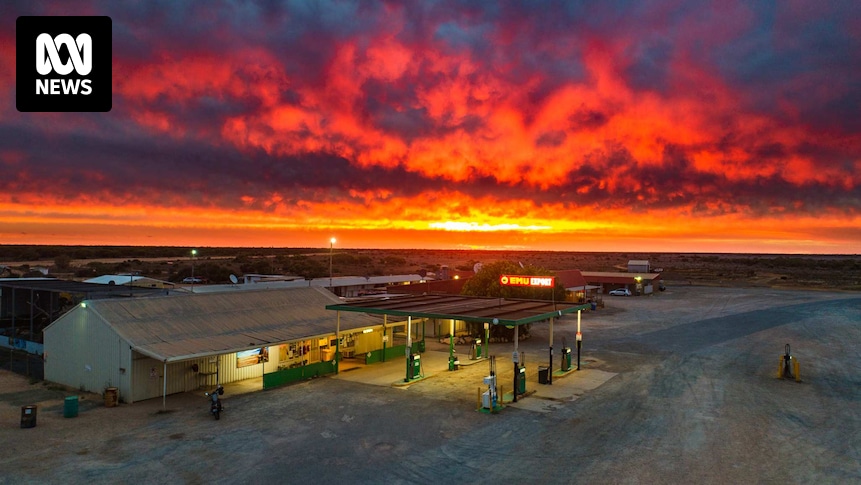One of the first things visitors are told upon arrival at an outback WA bird observatory — 1,200 kilometres from the nearest capital city — is to switch their watches to Tokyo time.
Along the Nullarbor Plain, between Perth and the South Australian border, the Eyre Bird Observatory is Australia’s oldest and most remote bird research station.
It has also adopted an unofficial time zone, operating 15 minutes ahead of the nearest township, Cocklebiddy, and one hour ahead of Perth.
Weather reporting is among the daily duties of Eyre Bird Observatory caretakers Kay and David Cole. (ABC Esperance: Hayden Smith)
This brings it in line with Japan Standard Time.
“Don’t ask exactly why … but that’s what it is,” says David Cole, one of the observatory’s volunteer caretakers.
However, there are some practical reasons why the bird observatory and several nearby pastoral stations have decided to wind their clocks forward.
‘Easier maths’
A number of outposts along the Eyre Highway, including Cocklebiddy, have long operated on the unofficial Central Western Time, which is 45 minutes ahead of the official Western Standard Time (WST).
“It doesn’t make much difference to us here, but it is a good conversation point,” Cocklebiddy Roadhouse manager Laree Bastin says.
Cocklebiddy Roadhouse operates on the unofficial Central Western Time. (The Drone Way: Ben Stamatovich)
However, to the confusion of visitors, the Eyre Bird Observatory (EBO) operates another 15 minutes ahead of Central Western Time.
EBO committee member Steve Edwards says he has never been given a clear explanation.
“The only answer I’ve got is that it is much easier for all concerned to make EBO time one hour ahead of Perth,” he says.
Western Australia’s Central Western Time Zone. (ABC News: Samantha Goerling)
“Doing the maths to be 45 minutes ahead of Perth … requires some calculations, whereas one hour either way is easier.”
But the EBO is not alone, with some massive Nullarbor sheep operations also having set their clocks forward several decades ago.
Cocklebiddy, and other Nullarbor outposts, operate on the unofficial Central Western Time, which is 45 minutes ahead of Perth. (ABC Esperance: Hayden Smith)
‘Confusing’ at first
Ross Wood first moved to Australia’s largest sheep operation, Rawlinna station, in the 1970s as a young overseer.
He went on to spend the better part of 30 years working at Rawlinna and other pastoral operations in the region.
Former Rawlinna station manager Ross Wood says the different time zones can be confusing at first. (ABC Rural: Tara De Landgrafft)
The now-retired pastoralist says it was initially “very confusing” trying to understand the various time systems.
Apart from Western Standard Time, there is the informal “station time” (one hour ahead of WST, like the Eyre Bird Observatory), “highway time” (CWT), and “railway time” — which shares a time zone with South Australia.
While admitting it was all “pretty mad”, Mr Wood says there is a rationale for the station operating one hour ahead of the vast majority of Western Australia.
Various properties on WA’s Nullarbor Plain have the same time zone as Tokyo. (ABC News: Robert Koenig-Luck)
“Those properties out there are a long way to the east … the sun gets up earlier and goes to bed a bit earlier,” he says.
“It’s just basically daylight savings all the time.
“When you’ve been out there a long time, it just becomes second nature. You don’t even think about it.”
Mr Wood says the suite of different time zones also makes it easier to communicate with the South Australian-based head office of Rawlinna’s parent company, Jumbuck Pastoral.
“We used to joke when we were lying in our swags many, many years ago … as the sun came up at dawn, we would say that was the lights being turned on at Jumbuck,” he says.
